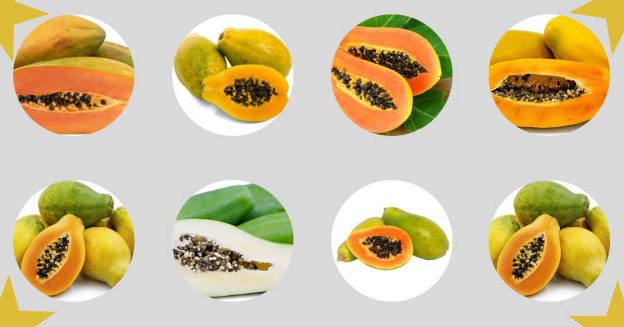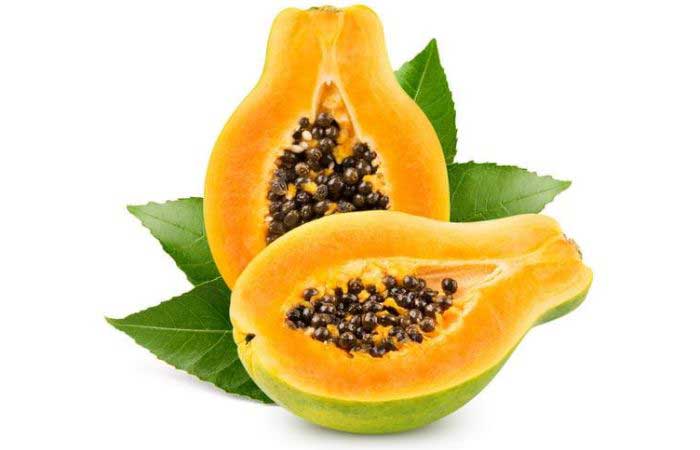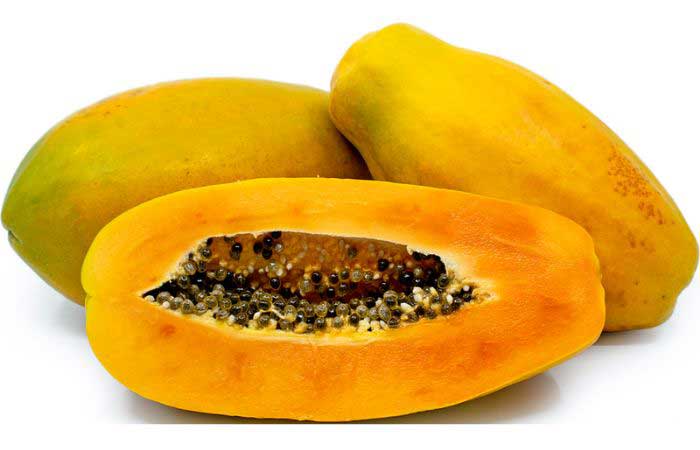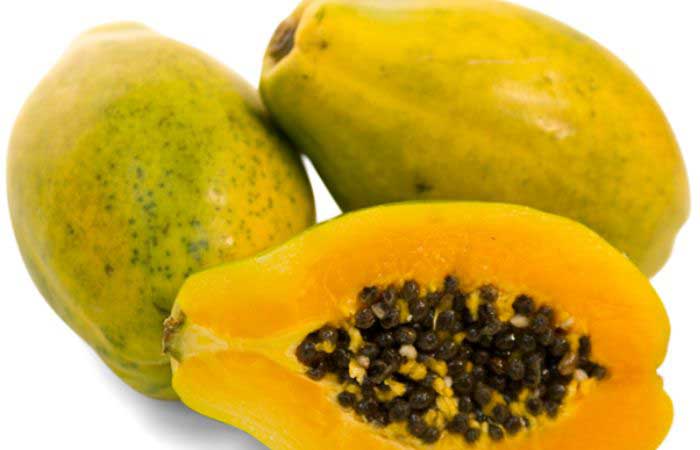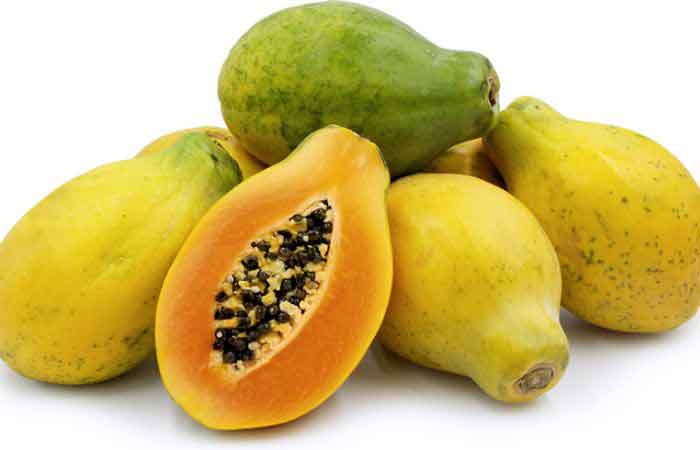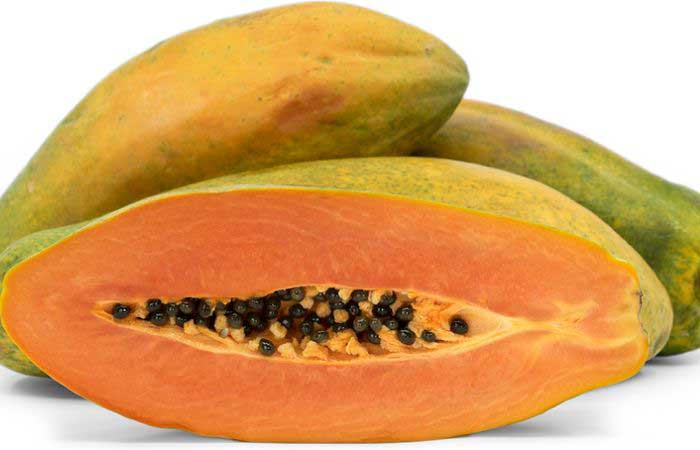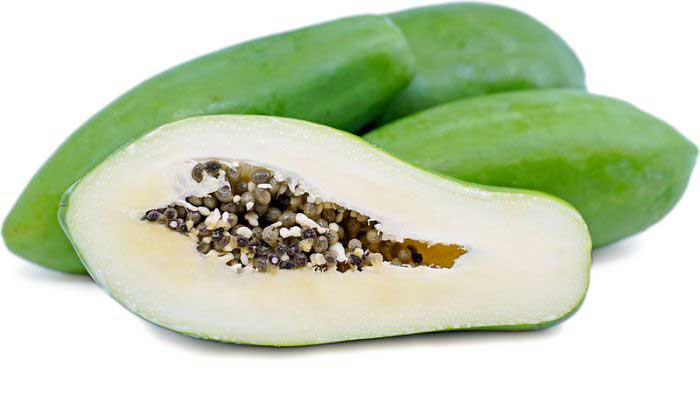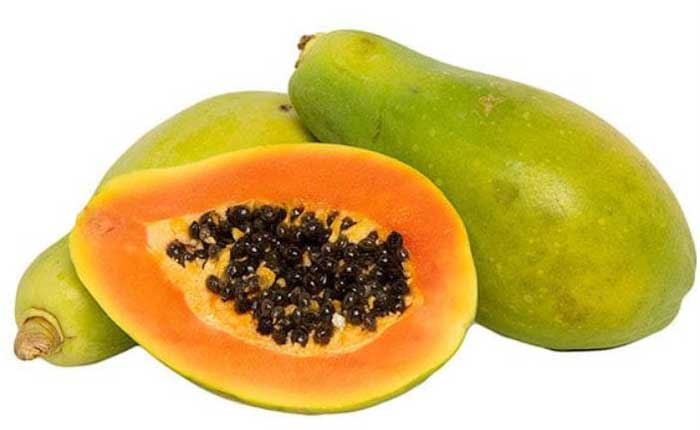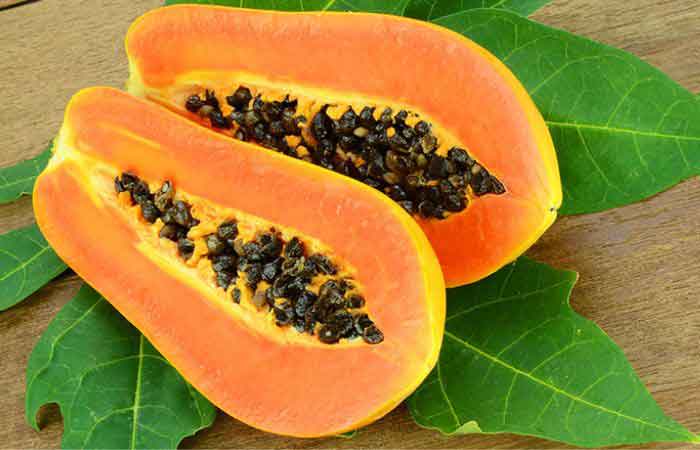Introduction
Papayas are delicious and nutritious tropical fruits that have gained popularity worldwide. Their vibrant color, sweet taste, and numerous health benefits make them a favorite among fruit lovers. Understanding the different papaya varieties is essential for anyone looking to explore the diverse flavors and characteristics offered by these fruits. In this comprehensive guide, we will delve into the various types of papayas, their origins, flavors, culinary uses, nutritional benefits, and cultivation tips.
Domestication and Genetics of Papaya
Papaya is an excellent model species for genomic studies that can help gain insight into the domestication process and improvement of papaya and other tropical crops1,2. Evidence from various fields of study strongly indicates that Mesoamerica is the birthplace and site of domestication for papaya, with wild populations in the region exhibiting considerably greater genetic diversity when compared to the cultivated varieties1,3.
Wild populations of papaya occur throughout Mesoamerica and represent the gene pool of genetic variability for further evolution and future crop management1,4. The domestication history of the species is still not fully understood, but the domestication syndrome distinguishes wild and domesticated papayas1. The use of genetic markers to assess the genetic diversity of wild and domesticated papaya is important, and papaya is the first species with a transgenic cultivar to be released for human consumption1,2.
The Basics of Papaya Varieties
To appreciate the richness of papaya varieties, it is important to understand their classification and the factors that influence the selection of a specific type. By examining their common characteristics, we can better appreciate the unique qualities each variety possesses.
Definition and classification of papaya varieties
Experts categorize papaya types based on their characteristics including size, shape, color, flavor, and texture. As solitary, Mexican, Hawaiian, Sunrise, Maradol, green, strawberry, and Caribbean Red papayas, they fall into this category.
Factors influencing papaya variety selection
When choosing a papaya variety, factors such as taste preference, culinary applications, nutritional value, growing conditions, and availability play a crucial role. Understanding these factors will help individuals make informed decisions when purchasing or cultivating papayas.
Common characteristics among different papaya varieties
Despite their differences, all papaya varieties share some common characteristics. These include their soft and juicy flesh, vibrant colors, rich aroma, and high nutritional content. Exploring the shared features will provide a baseline understanding of papayas before diving into the specifics of each variety.
1. Solo Papaya Varieties
Description and Characteristics of Solo Papayas
Solo papayas, also known as Hawaiian Solo or Golden papayas, are smaller in size and have a distinct pear-like shape. They feature bright orange or yellow skin when ripe and have sweet, tangy flesh.
Origins and geographical distribution
Solo papayas originated in the tropical regions of Central America and have since spread to other parts of the world. They are widely cultivated in countries such as Mexico, Belize, and Hawaii.
Taste profile and culinary uses
Solo papayas have a flavor that is tropical and delicious, with hints of melon and lemon. Most commonly, people eat them raw or add them to a variety of dishes such as salads, smoothies, desserts, and salsas.
Nutritional benefits and health advantages
Solo papayas are rich in vitamins A, C, and E, as well as fiber and antioxidants. They promote digestive health, boost the immune system, and contribute to healthy skin and hair.
Growing and cultivation tips for Solo papayas
For successful cultivation of Solo papayas, it is essential to provide them with a warm, tropical climate, well-drained soil, and adequate sunlight. Proper watering, fertilization, and pest control techniques are also important considerations.
2. Mexican Papaya Varieties
Overview of Mexican papayas and their distinct features
Mexican papayas, also known as Maradol papayas, are large-sized fruits with a cylindrical shape. They have green or yellowish skin when unripe, which turns yellow or orange as they mature.
Historical background and cultivation regions
People have cultivated Mexican papayas in Mexico for centuries, contributing to their rich history. Additionally, they are grown in other countries with suitable tropical climates, including Brazil, Belize, and the Caribbean.
The flavor profile and culinary applications
Mexican papayas have a sweet, musky flavor with notes of tropical fruits. They are often enjoyed fresh, either on their own or in fruit salads. The vibrant and juicy flesh of Mexican papayas also makes them a popular ingredient in smoothies, juices, and desserts. Additionally, their unique flavor pairs well with savory dishes, adding a delightful sweetness to salsas, chutneys, and marinades.
Nutritional composition and health benefits
Mexican papayas are rich in vitamins A and C, potassium, and dietary fiber, among other important minerals. These nutrients contribute to a healthy immune system, promote heart health, aid digestion, and support overall well-being. The high water content of Mexican papayas also helps keep the body hydrated.
Best practices for growing Mexican papayas
To successfully grow Mexican papayas, it is important to provide them with a warm and tropical climate, preferably with temperatures between 70°F and 90°F (21°C to 32°C). They thrive in well-drained soil with organic matter and require regular watering to maintain moisture levels. Providing adequate sunlight and protection from strong winds is also beneficial for their growth. Pruning and proper pest control measures are necessary to ensure healthy and productive plants.
3. Hawaiian Papaya Varieties
Introduction to Hawaiian papayas and their unique qualities
Hawaiian papayas, also known as Rainbow papayas, are medium-sized fruits with vibrant reddish-orange or yellow skin when ripe. They are known for their luscious, buttery texture and delicate flavor.
Native Origins and Cultivation in Hawaii
Hawaiian papayas have their origins in the beautiful islands of Hawaii. They are predominantly cultivated in the Puna region, which provides the ideal climate and volcanic soil necessary for their growth.
Flavor characteristics and preferred uses
Hawaiian papayas have a subtly sweet and slightly floral flavor. Their smooth and creamy texture makes them a popular choice for enjoying fresh. They are also excellent additions to fruit salads, smoothies, and tropical desserts, as well as a flavorful ingredient in sauces and dressings.
Nutritional Properties and potential health advantages
Hawaiian papayas are rich in vitamins A and C, folate, and dietary fiber. They provide antioxidant protection, support immune function, aid digestion, and contribute to healthy skin. The enzymes present in Hawaiian papayas, such as papain, are known to have anti-inflammatory properties and promote digestive health.
Cultivation techniques specific to Hawaiian papayas
Successful cultivation of Hawaiian papayas requires a tropical climate with temperatures around 75°F to 85°F (24°C to 29°C). They prefer good moisture retention and well-drained soil. Adequate sunlight and protection from strong winds are crucial for their growth. Regular watering, fertilization, and pruning are essential for healthy and productive Hawaiian papaya trees.
4. Sunrise Papaya Varieties
Overview of Sunrise Papayas and their Attributes
Sunrise papayas, also known as Strawberry papayas, are small to medium-sized fruits with a distinctive elongated shape. They have vibrant reddish-orange skin when ripe and are known for their juicy and aromatic flesh.
Development and cultivation regions
Sunrise papayas were developed in Hawaii through selective breeding. They are primarily cultivated in tropical regions with warm climates, such as Hawaii, Florida, and parts of Southeast Asia.
The flavor profile and culinary versatility
Sunrise papayas have a delightful balance of sweetness and acidity, often compared to strawberries and melons. They are commonly enjoyed fresh, sliced, or used as a topping for yogurt, cereals, and desserts. Their refreshing flavor also makes them a great addition to smoothies and fruit salads.
Nutritional Components and potential health benefits
Sunrise papayas are a good source of vitamin C, vitamin A, and dietary fiber. They contribute to immune system function, promote healthy skin, support digestion, and provide antioxidant protection. The enzymes found in Sunrise papayas, such as papain, aid in digestion and may have anti-inflammatory properties.
Tips for successfully growing Sunrise papayas
To cultivate Sunrise papayas successfully, a warm and tropical climate is necessary, with temperatures ranging from 75°F to 85°F (24°C to 29°C). They prefer well-drained soil with good moisture retention. Providing them with full sunlight and protection from strong winds is important. Regular watering, fertilization, and proper pruning techniques will help ensure optimal growth and fruit production.
5. Maradol Papaya Varieties
Description and distinctive features of Maradol papayas
Maradol papayas are large-sized fruits with an oval or pear-like shape. They have green skin when unripe, which gradually turns yellow or orange as they ripen. Maradol papayas are known for their juicy, salmon-colored flesh.
Origins and prevalence in certain regions
Maradol papayas originated in Mexico and are widely cultivated in various tropical regions, including Central and South America. They have gained popularity and can be found in many markets around the world.
Taste characteristics and popular culinary applications
Maradol papayas have a sweet, succulent taste with hints of tropical flavors like melon and mango. They are often enjoyed fresh, sliced, or used in fruit salads. Their soft and smooth texture makes them suitable for blending into smoothies or making refreshing sorbets and popsicles.
Nutritional value and potential health benefits
Maradol papayas are a rich source of vitamin C, vitamin A, folate, potassium, and dietary fiber. They provide essential nutrients for maintaining a healthy immune system, promoting cardiovascular health, supporting digestion, and aiding in overall well-being.
Cultivation Considerations for Maradol papayas
Maradol papayas require a warm and tropical climate, with temperatures ranging from 75°F to 90°F (24°C to 32°C), for optimal growth. They thrive in well-drained soil and prefer full sunlight. Adequate watering, regular fertilization, and protection from strong winds are important factors to ensure healthy and productive Maradol papaya trees.
6. Green Papaya Varieties
Introduction to green papayas and their notable traits
Green papayas, also known as unripe papayas, are the young and underripe stage of papaya fruits. They are characterized by their green skin and firm texture.
Geographical Distribution and Cultural significance
Green papayas are commonly found in tropical regions and are particularly popular in Southeast Asian cuisine. They play a significant role in dishes like papaya salad, stir-fries, and curries.
Culinary uses and popular dishes
Green papayas have a mild and slightly tangy flavor. They are frequently shredded or thinly sliced and incorporated into salads, providing a refreshing and crunchy component. Green papayas are also cooked in diverse savory dishes, as their firm texture withstands heat and imparts a distinctive flavor to the recipes.
Nutritional content and health advantages
Green papayas contain vitamins A, C, E, and K, as well as potassium and dietary fiber. They are low in calories and rich in antioxidants, supporting the immune system, aiding digestion, and contributing to overall health and well-being.
Growing recommendations for green papayas
To grow green papayas, a warm and tropical climate is ideal, with temperatures ranging from 70°F to 90°F (21°C to 32°C). They prefer well-drained soil with organic matter and regular watering. Providing them with full sunlight and protecting them from strong winds is crucial for their growth. Green papayas are harvestable once they attain the desired size and firmness for culinary purposes.
7. Strawberry Papaya Varieties
Description and distinguishing features of strawberry papayas
Strawberry papayas are small to medium-sized fruits with a round or pear-like shape. They have thin, smooth skin that turns from green to yellow-orange when ripe. The flesh of strawberry papayas is bright orange and speckled with small black seeds.
Cultivation regions and popularity
Tropical places with warm weather, such as Hawaii, Florida, and some parts of Central and South America, are where strawberry papayas are grown by farmers. They are well-known and appreciated for their unique flavor and vibrant color.
The flavor profile and culinary creativity
Strawberry papayas have a sweet, tropical flavor with hints of strawberry and melon. Their juicy and smooth texture makes them perfect for enjoying fresh. They are also used in fruit salads, smoothies, and desserts, adding a refreshing and tropical twist to recipes.
Nutritional Components and potential health benefits
Strawberry papayas are rich in vitamins A and C, folate, potassium, and dietary fiber. They provide antioxidants that help protect against cellular damage, support immune function, aid digestion, and promote healthy skin and vision.
Effective strategies for cultivating strawberry papaya
To cultivate strawberry papayas successfully, a warm and tropical climate is essential, with temperatures around 75°F to 85°F (24°C to 29°C). They require well-drained soil with good moisture retention. Providing full sunlight and protection from strong winds is crucial. Regular watering, fertilization, and proper pruning techniques will contribute to healthy growth and abundant fruit production.
8. Caribbean Red Papaya Varieties
Overview of Caribbean Red Papayas and their characteristics
Caribbean Red papayas are large-sized fruits with a round or pear-like shape. They have vibrant reddish-orange skin when ripe, contrasting with their sweet, bright orange flesh.
Origins and cultivation areas
Caribbean Red papayas, renowned for their succulent texture and distinctive flavor, grow in diverse tropical locations, including certain areas of Central and South America, but originated in the Caribbean region.
Taste attributes and preferred culinary applications
Caribbean Red papayas have a deliciously sweet and tropical flavor, with hints of melon and berries. They are often enjoyed fresh, sliced, or added to fruit salads. Their vibrant color and rich taste also make them a popular ingredient in smoothies, sorbets, and tropical desserts.
Nutritional value and health benefits
Caribbean Red papayas are a rich source of vitamins A and C, folate, potassium, and dietary fiber. They provide antioxidant properties, support immune function, aid in digestion, and contribute to overall well-being. The enzymes found in Caribbean Red papayas, such as papain, have been linked to anti-inflammatory advantages and enhanced digestion.
Cultivation techniques specific to Caribbean Red papayas
For successful cultivation of Caribbean Red papayas, a warm and tropical climate is necessary, with temperatures ranging from 75°F to 85°F (24°C to 29°C). They require well-drained soil with good moisture retention. Providing full sunlight and protection from strong winds is important. Regular watering, proper fertilization, and pruning practices will help ensure healthy growth and abundant fruit production.
Papaya Production, Trade, and Consumption in the US: Which Varieties Are Most Popular.
Papaya production in the United States is not considered significant, with total production close to 14,000 t annually. However, with per capita consumption of the fruit on the rise and recent advances in the development of papaya cultivars tolerant to the Papaya Ring Spot Virus, there is potential to increase production. Hawaii leads the US papaya export market, contributing on average more than 95% of total US papaya exports. The Hawaiian papaya industry has been instrumental in the growth and inputs made to the papaya international trade since its beginning in the early 1900s.
The Hawaiian papaya industry has developed the “Solo” papaya varieties, which enabled the US to become the single and prime papaya exporter in the 60s and 70s. Hawaiian papaya production reached 13.4 million pounds in 2021, a 62% increase from 2020 and the highest level since 2017. The most popular papaya varieties in Hawaii are Kapoho Solo, Rainbow, and Sunrise/SunUp. Therefore, the US papaya production, trade, and consumption overview show that Hawaii is the main contributor to US papaya exports, and recent advances in the development of papaya cultivars have the potential to increase production. 1,2,3,4,5.
Conclusion
In conclusion, exploring the diverse world of papaya varieties opens up a range of flavors, textures, and culinary possibilities. From the sweet and musky Solo papayas to the tropical and vibrant Caribbean Red papayas, each variety offers its own unique characteristics. Understanding the different papaya types allows for informed selection and enhances the enjoyment of this tropical fruit.
By delving into the origins, flavor profiles, culinary applications, nutritional benefits, and cultivation techniques of various papaya varieties, individuals can expand their culinary horizons and embrace the versatility of papayas in different dishes and recipes.
We encourage readers to venture beyond their usual papaya choices and try new varieties, exploring the different tastes and textures they offer. Whether enjoyed fresh, in salads, smoothies, or cooked dishes, papayas bring a delightful tropical touch to the table.
So, why not embark on a papaya adventure, savoring the nuances of Solo, Mexican, Hawaiian, Sunrise, Maradol, Green, Strawberry, and Caribbean Red papayas? Let your taste buds be your guide as you discover the captivating world of papaya varieties.
Frequently Asked Questions (FAQs)
1. Can papayas be grown in colder climates?
Papayas are considered tropical fruit and grow best in areas with a tropical climate and plenty of rainfall. However, some papaya varieties can be grown in colder climates under greenhouse conditions. 1
2. Are papayas genetically modified (GM)?
Yes, some papayas are genetically modified to be resistant to the Papaya Ring Spot Virus, which is a major threat to papaya crops. The genetically modified papaya is approved for consumption and has been grown in Hawaii since the 1990s. 2
3. Are green papayas safe to eat?
Green papayas have firm flesh that is not sweet and is used in soups, stews, and salads. They are safe to eat and are a common ingredient in Southeast Asian cuisine. 3
4. Can papayas help with digestion?
Yes, papayas are high in fiber, which is essential for regulating digestion and promoting feelings of satiety. Papayas also contain enzymes that aid in digestion, such as papain and chymopapain. These enzymes help break down proteins and can reduce inflammation in the digestive tract. 4
5. What is the best way to select a ripe papaya?
The best way to select ripe papaya is to look for one that is mostly yellow with a few green spots. The skin should be free of bruises, cuts, or soft spots. A ripe papaya should also give slightly when pressed. 3
6. Can papayas be included in a weight-loss diet?
Yes, papayas are low in calories and high in fiber, making them a good choice for a weight-loss diet. Papayas are also high in water content, which can help promote feelings of fullness and reduce calorie intake. 4
7. How many papaya varieties are there worldwide?
There are several papaya varieties available worldwide, with diverse characteristics such as size, texture, and flavor.
8. What are the most common papaya varieties?
The Mexican and Hawaiian papaya varieties are the most commonly cultivated and readily available in supermarkets.
9. What is the difference between Mexican and Hawaiian papaya?
Mexican papaya is larger and has pink flesh that is lightly sweet, while Hawaiian papaya is smaller, sweeter, and has orange to pink-colored flesh.
10. What are some other papaya varieties?
Other papaya varieties include Red Lady, Maradol, Tainung, Solo, Sunrise, Kapoho, Golden, Caribbean Red, and Honey Gold.
That concludes the article on different papaya varieties. If you have any further questions or require additional information, feel free to ask. Enjoy your papaya adventures and savor the taste of these incredible fruits!
I am Gaushoul Agam
𝐂𝐨-𝐅𝐨𝐮𝐧𝐝𝐞𝐫 & 𝐂𝐄𝐎
ToAgriculture
I am an experienced Horticulture Officer in the Department of Agricultural Extension in Bangladesh. I am committed to improving agriculture and farming.
I created ToAgriculture to address global food safety concerns. These concerns are caused by a growing population, diminishing farmland, and the impact of climate change on agriculture. I assist readers in learning modern farming techniques.
I also help them control pests and diseases. Additionally, I guide managing agriculture sustainably. All of this is aimed at creating a better and more successful future in farming.
I have experience in field crops and horticulture crops. I know about fruit and vegetable farming, managing pests and diseases, irrigation, and grafting. Come with me as I share my knowledge and experiences to help you create a better future.
